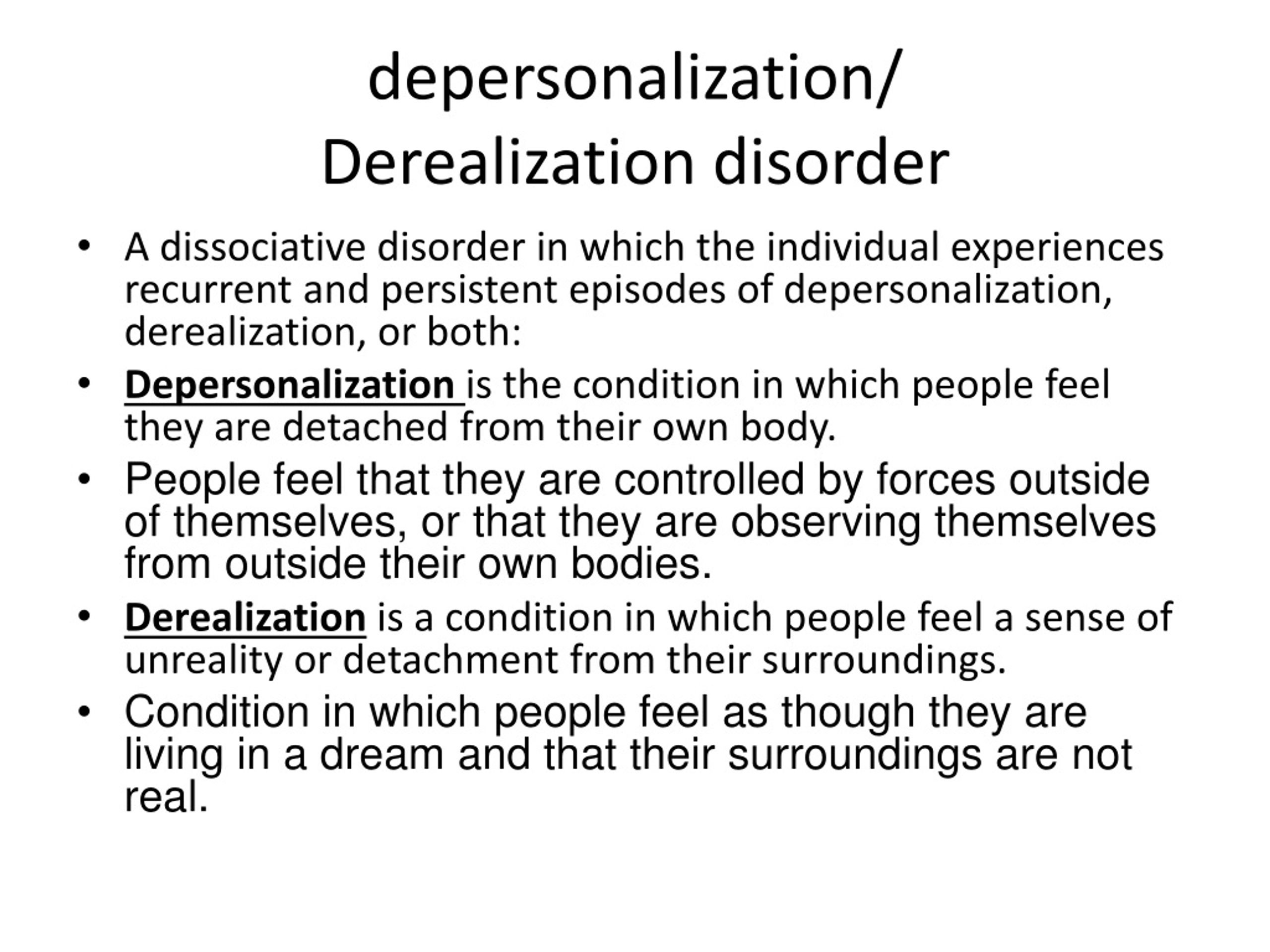

4 A similar pattern was later reported by Lader 5 in a second patient with ongoing depersonalization. These changes were also accompanied by a decline in pulse rate.
#Depersonalization disorder symptoms skin
For example, while measuring the skin conductance (SC) of a patient with anxiety, Lader and Wing 4 reported a dramatic change in the SC tracing from the typical low-resistance, fluctuating pattern usually associated with anxiety to a high-resistance, nonfluctuating pattern at the onset of a depersonalization episode. In contrast to the subjective nature of depersonalization, some early work 3 suggested that patients with depersonalization may have an underactive sympathetic nervous system. 1 Many patients have a subjective absence of emotional feelings despite apparently normal emotional expression. The fact that patients with depersonalization disorder respond earlier to a startling noise suggests that they are in a heightened state of alertness and that the reduced response to unpleasant stimuli is caused by a selective inhibitory mechanism on emotional processing.ĭEPERSONALIZATION disorder is characterized by persistent or recurrent episodes of "detachment or estrangement from one's self." 1 The individual may feel like an automaton, or there may be the sensation of being an outside observer of one's own mental processes. 03).Ĭonclusions In depersonalization disorder, autonomic response to unpleasant stimuli is reduced. In contrast, latency to nonspecific stimuli (clap and sigh) was significantly shorter in the depersonalization and anxiety groups (1.6 seconds) than in controls (2.3 seconds) ( P =. Also, the latency of response to these stimuli was significantly prolonged in the group with depersonalization disorder (3.01 seconds compared with 2.5 and 2.1 seconds in the control and anxiety groups, respectively P =. Results The skin conductance response to unpleasant pictures was significantly reduced in patients with depersonalization disorder (magnitude of 0.017 µsiemens in controls and 0.103 µsiemens in patients with anxiety disorders P =.

Methods The skin conductance responses of 15 patients with chronic depersonalization disorder according to DSM-IV, 15 controls, and 11 individuals with anxiety disorders according to DSM-IV, were recorded in response to nonspecific elicitors (an unexpected clap and taking a sigh) and in response to 15 randomized pictures with different emotional valences: 5 unpleasant, 5 pleasant, and 5 neutral. In this study, we tested the prediction that autonomic response to emotional stimuli would be reduced in patients with depersonalization disorder.

Shared Decision Making and Communicationīackground Emotional-processing inhibition has been suggested as a mechanism underlying some of the clinical features of depersonalization and/or derealization.Scientific Discovery and the Future of Medicine.Health Care Economics, Insurance, Payment.Clinical Implications of Basic Neuroscience.Challenges in Clinical Electrocardiography.


 0 kommentar(er)
0 kommentar(er)
